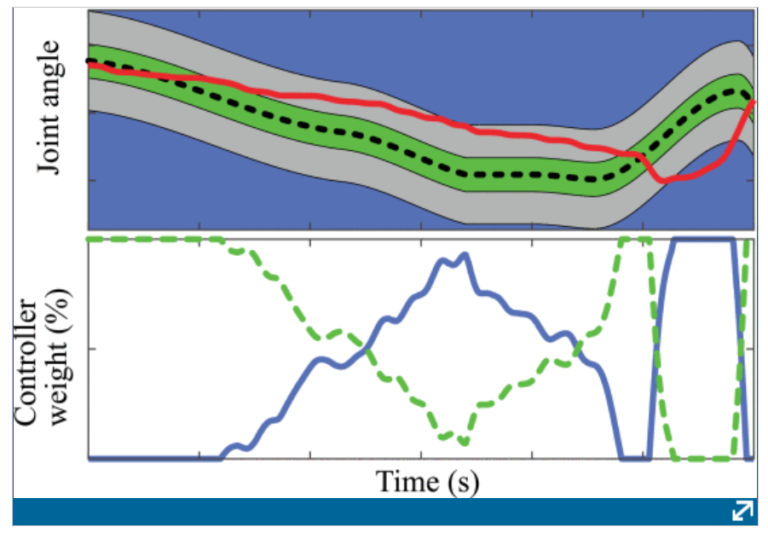In this paper, we present the design, control, and preliminary evaluation of the Symbitron exoskeleton, a lower limb modular exoskeleton developed for people with a spinal cord injury. The mechanical and electrical configuration and the controller can be personalized to accommodate differences in impairments among individuals with spinal cord injuries (SCI). In hardware, this personalization is accomplished by a modular approach that allows the reconfiguration of a lower-limb exoskeleton with ultimately eight powered series actuated (SEA) joints and high fidelity torque control. For SCI individuals with an incomplete lesion and sufficient hip control, we applied a trajectory-free neuromuscular control (NMC) strategy and used the exoskeleton in the ankle-knee configuration. For complete SCI individuals, we used a combination of a NMC and an impedance based trajectory tracking strategy with the exoskeleton in the ankle-knee-hip configuration. Results of a preliminary evaluation of the developed hardware and software showed that SCI individuals with an incomplete lesion could naturally vary their walking speed and step length and walked faster compared to walking without the device. SCI individuals with a complete lesion, who could not walk without support, were able to walk with the device and with the support of crutches that included a push-button for step initiation Our results demonstrate that an exoskeleton with modular hardware and control allows SCI individuals with limited or no lower limb function to receive tailored support and regain mobility.

